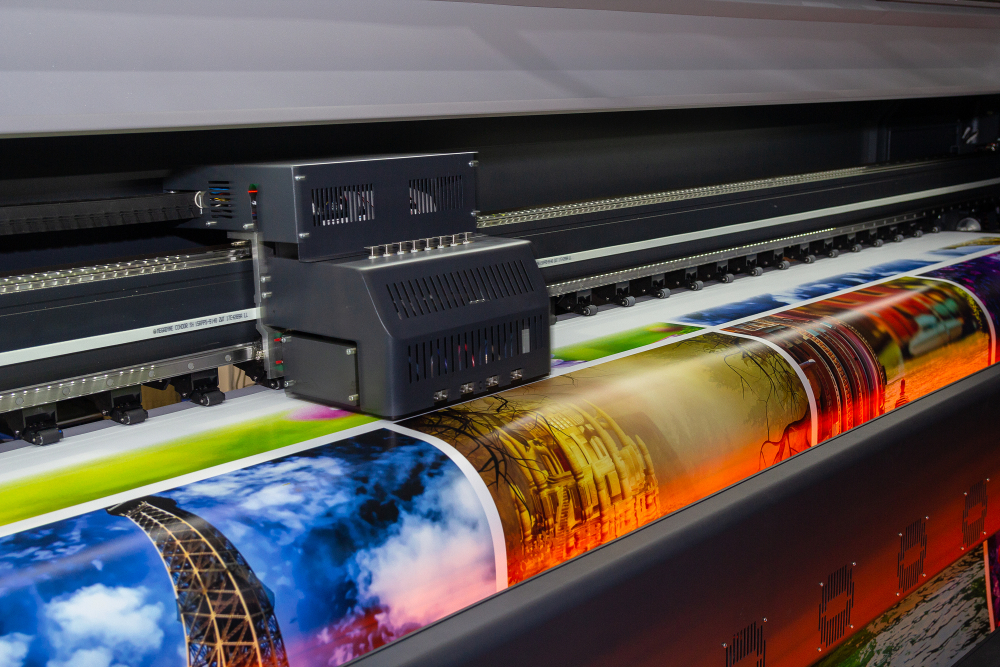Dye sublimation may seem like a high-tech innovation of recent years, but its roots stretch back decades to scientific breakthroughs in material chemistry. Over time, this once-niche technique has evolved into a mainstream printing method embraced by both commercial manufacturers and small-scale creators alike. Whether you’re printing photo panels, personalising mugs, or producing custom apparel, understanding the history and growth of dye sublimation gives deeper insight into its present-day popularity.
In this article, we explore the origins of sublimation printing, how it advanced through the digital age, and why it continues to revolutionise creative industries in 2025 and beyond.
Table of Contents
Where It All Began: Sublimation in Science
The principle of sublimation has long been recognised in the field of chemistry. It describes a process where a solid transforms directly into a gas without passing through the liquid stage. Dry ice (solid carbon dioxide) is a classic example, but in the mid-20th century, scientists began experimenting with synthetic dyes that could behave similarly when exposed to heat and pressure.
The discovery that certain dyes could sublimate and embed into polyester-like materials laid the foundation for the dye sublimation printing process. Early uses were mostly experimental or confined to industrial and military contexts, where durable markings and graphics were needed on synthetic materials.
Enter the Digital Age
The emergence of digital printing in the 1980s and 90s was a game-changer. Personal computers, design software, and inkjet technology created new possibilities for precision and accessibility. Suddenly, it was possible to create digital artwork on a computer and print it onto specialised transfer paper using sublimation ink.
The next step was to apply the printed design to a product using heat and pressure. This required heat presses, which evolved from bulky, industrial models to compact machines suitable for home and small business use. As the costs of printers and inks dropped, dye sublimation became accessible to a wider range of users.
Today, it’s hard to imagine the world of custom printing without sublimation — and the technology continues to improve year after year.
For a more detailed look at the core process, check out our guide to what dye sublimation printing is.
Key Milestones in Sublimation Printing
- 1950s–60s – Scientific research into heat-activated dyes
- 1980s – Early industrial applications and transfer printing
- 1990s – Rise of digital artwork and commercial inkjet printers
- 2000s – Affordable desktop sublimation systems enter the market
- 2010s – Explosion in small business and ecommerce applications
- 2020s – 3D sublimation, eco-friendly inks, and large-format growth
Applications Across Industries
Dye sublimation is now used in a huge range of fields, including:
- Custom Apparel – Sports kits, branded uniforms, fashionwear
- Personalised Gifts – Mugs, phone cases, keyrings, coasters
- Interior Décor – Printed cushions, wall hangings, photo panels
- Commercial Displays – Fabric banners, exhibition backdrops
- Art & Photography – Gallery-quality metal prints
Its versatility, vibrant colours, and long-lasting results make sublimation an ideal choice for high-demand products and creative expression alike.
The Rise of Microbusinesses
One of the most exciting outcomes of sublimation’s development is its role in enabling home-based and small-scale entrepreneurship. With minimal space, equipment, and training, people can now launch businesses that produce high-quality personalised products for Etsy, Shopify, Amazon Handmade, or local markets.
These businesses benefit from:
- Low production costs
- Short turnaround times
- Ability to customise every item
- No need to hold bulk stock
This has opened doors for thousands of designers, hobbyists, and niche crafters around the world.
What’s Next for Sublimation?
As the industry grows, we’re seeing innovations in:
- 3D sublimation – Allowing curved surfaces like phone cases and tumblers to be decorated
- Sustainable production – Using water-based inks and recyclable blanks
- Large-format textile printing – For soft signage, flags, curtains, and fashion
- Better colour management – With RIP software and ICC profiles for consistent output
Technology is also improving the colour range, speed, and ease of use for newcomers.
Final Thoughts
Dye sublimation has come a long way from lab experiments and industrial prototypes. It’s now a creative powerhouse used by artists, makers, and major brands around the world. From personalised gifts to professional-quality décor, the method’s popularity continues to grow — driven by technology, creativity, and demand for uniqueness.
To fully grasp the potential of this process, take a look at our full explanation of what dye sublimation printing entails.








_3-6.jpg)